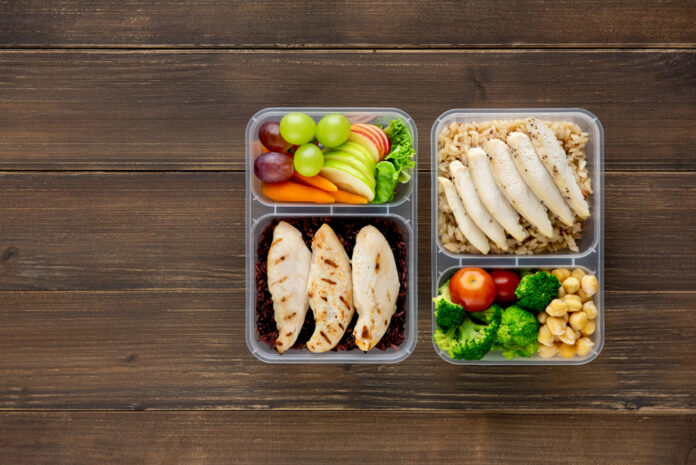Maintaining heart health is crucial, and one of the most effective ways to do this is by managing your sodium intake. High levels of sodium in your diet can lead to elevated blood pressure, increasing the risk of heart disease and stroke. Fortunately, there are practical steps you can take to reduce sodium consumption and improve your heart health. Below are some of the best low-sodium diet tips backed by expert research.
Understand the Impact of Sodium on Your Heart
Excessive sodium intake can cause your body to retain water, which puts extra strain on your heart and blood vessels. This can lead to high blood pressure, heart failure, and other cardiovascular conditions. Reducing sodium helps alleviate symptoms like fluid buildup, weight gain, bloating, and swelling, especially in individuals with heart failure.
Read Food Labels Carefully
One of the first steps to lowering your sodium intake is to become vigilant about reading food labels. Packaged and processed foods often contain high levels of sodium, even those that don’t taste salty. Aim for foods that offer 5% Daily Value (DV) or less of sodium per serving. Be cautious of terms like “sodium-free” or “light in sodium” as they can still contain some sodium.
Choose Fresh Over Processed Foods
To significantly cut down on sodium, opt for fresh fruits and vegetables, lean meats, and whole grains. More than 70% of dietary sodium comes from packaged foods and restaurant meals, so cooking at home with fresh ingredients gives you better control over your sodium intake.
Opt for Low-Sodium or No-Salt-Added Products
When shopping, look for products labeled “low sodium,” “very low sodium,” or “no salt added.” For instance, choose no-salt-added canned vegetables or unsalted nuts and seeds to keep your snacks heart-friendly.
Use Herbs and Spices Instead of Salt
Enhance the flavor of your meals with herbs, spices, citrus juices, and vinegars. Using alternatives like garlic, onion, basil, rosemary, and lemon juice can make your dishes delicious without the added sodium. Be cautious with salt substitutes that may contain potassium chloride, especially if you have heart failure.
Be Mindful When Dining Out
Restaurant meals can be sodium traps. When eating out, request meals prepared without added salt, and choose dishes that are grilled, steamed, or baked instead of fried. Ask for sauces and dressings on the side, and opt for salads with fresh ingredients.
Cook at Home More Often
Cooking at home allows you to control the ingredients and reduce sodium. Prepare meals using fresh or frozen meats, and avoid processed items like cured meats or marinated poultry. Homemade soups, stews, and sauces can be made with little to no added salt.
Manage Portions and Balance Meals
Controlling portion sizes can help prevent overeating and excessive sodium intake. Use smaller plates and bowls, and fill half your plate with fruits and vegetables for a nutrient-rich, low-sodium meal.
Incorporate Whole Grains and High-Fiber Foods
Whole grains like brown rice, quinoa, barley, and whole wheat pasta are excellent choices for a heart-healthy diet. Fiber-rich foods assist digestion, control blood sugar, and may lower cholesterol, contributing to overall cardiovascular health.
Limit High-Sodium Foods
Be aware of foods that are typically high in sodium and limit their consumption. These include:
- Processed meats like bacon, ham, and deli slices
- Canned soups and broths
- Snack foods like chips and pretzels
- Sauces and condiments such as soy sauce, ketchup, and salad dressings
Sample Low-Sodium Meal Plan
To give you an idea of how to put these tips into practice, here’s a sample one-day meal plan:
- Breakfast: Oatmeal cooked with water or low-fat milk, topped with fresh berries and a sprinkle of cinnamon.
- Lunch: Grilled chicken breast over a mixed green salad with carrots, cucumbers, and a homemade vinaigrette.
- Snack: Unsalted almonds or a piece of fresh fruit.
- Dinner: Baked salmon with lemon and herbs, steamed broccoli, and quinoa.
- Dessert: Fresh fruit salad or a small serving of sorbet.
Stay Hydrated and Limit Alcohol
Drinking plenty of water helps your body flush out excess sodium. Additionally, limiting alcohol consumption is important, as alcohol can affect your heart rate and exacerbate heart failure symptoms.
Consult a Healthcare Professional
Before making significant changes to your diet, especially if you have existing health conditions, it’s important to consult with a healthcare provider or a registered dietitian. They can offer personalized advice and ensure that your dietary changes support your overall health goals.
By making mindful food choices and adopting these low-sodium diet tips, you can take a proactive step towards improving your heart health. Remember, small changes can make a big difference over time, leading to a healthier and happier life.


